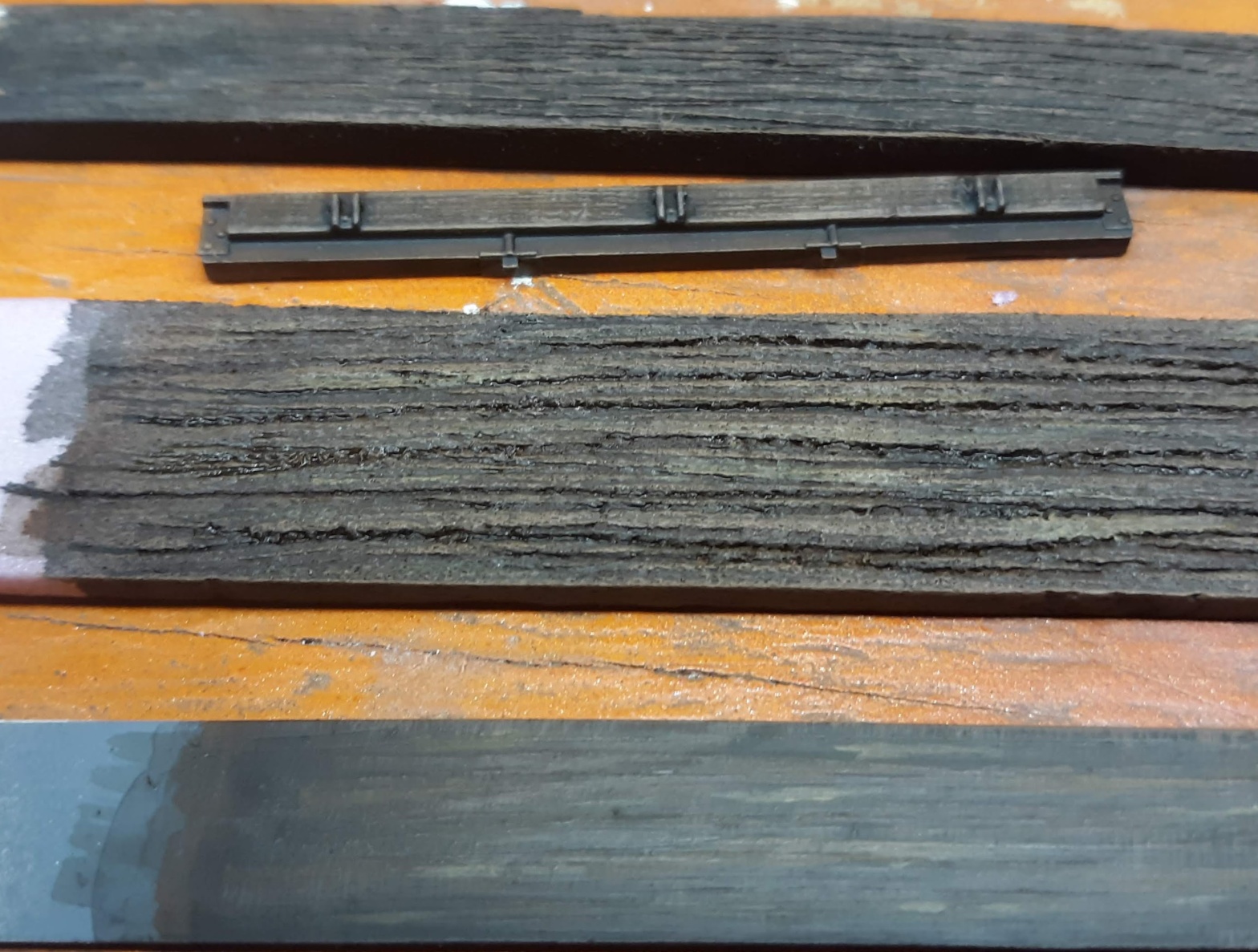Scaled wood grain is a solid way to impart realism into a model or diorama. You can create convincing wood using a few different materials; not the least of which is real wood. For this demonstration, I used XPS foam, styrene sheeting, balsa wood, and a molded styrene piece from a kit.

The subject and scale will help you decide which of these materials to use. For example, the XPS foam may be out of scale for a 1/72 model, but a thin strip of styrene sheet may be perfect.
As we get into how these techniques were achieved, keep in mind that some of these steps may be repeated more than once to get the results you want. For instance, I applied a dry coat in between washes to gauge how it was coming along. Keep in mind that by starting with different base coats and drybrush colors, you can tell a different story about the age and condition of the wood.
I used a steel wire brush and a hobby knife to apply texture to these materials. The only piece that I didn’t add texture to was the molded plastic kit part because it was already molded on. I put the pieces in front of a fan to speed up the drying time between layers.

Balsa Wood
The balsa has wood grain but its difficult to notice. By pulling the wire brush along the grain, I accentuated the details that were already there. This aged the wood. Next, I made an acrylic stain by adding black and brown craft paint to water. I generously applied this stain to the wood. I did this twice or until I couldn’t see the stark white of the wood anymore. Next, I took a lighter shade of brown and dry brushed against the grain in both directions. Initially, the dry brush looked quite stark. I applied a brown wash to the whole thing to tie it together.


XPS Foam
Extruded Polystyrene Foam (XPS) is a staple material in many hobbyist’s larder. I used a hot wire foam cutter to get thin strips. Much like the balsa wood, I pulled the wire brush along the length of the foam. Instead of stain, I applied a coat of brown paint. Next, I mixed a lighter and darker shade of the base coat. Into these mixes went a couple of drops of acrylic medium. This lowered the opacity of the colors. I took a small brush and applied short strips of the colors along the piece. These lines added grain to the foam similar to what can be seen in the balsa. I added some of the brown/black stain as a wash. When that was dry, I dry brushed against the grain. A couple more washes pulled everything together.


Styrene Sheet
I used the wire brush to apply grain. It was slow going as this was the strongest material. After that I switched to the hobby knife and added thicker, deeper grain lines. I scored the end of the plastic extra times and cut small notches out. This gave the end of the wood a worn look. I primed the piece to gete it ready for paint. From there, the steps were the same as for the foam. Base coat, paint stripes, washes.


Kit Part
Everything is ready to go for this piece so its straight to priming and painting. I used this part as a control for the others.


Conclusion
I don’t think any one of these techniques is better than another. It’s more a matter of the right material for the right situation. What techniques do you use?



One thought on “Wood Grain Techniques”